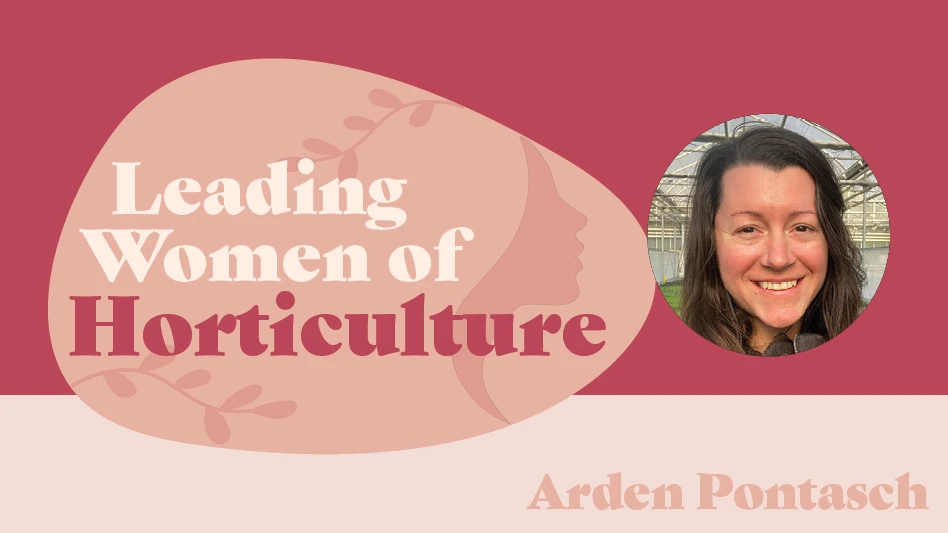
 Charlie Parkerson founded Lancaster Farms in 1969, two years before the first MANTS took place.
Charlie Parkerson founded Lancaster Farms in 1969, two years before the first MANTS took place.
The Suffolk, Virginia, wholesale nursery grew into a successful business. Charlie retired in 2013 and his son Art runs the nursery. Charlie still drops by MANTS to see old friends. But at the beginning, the Mid-Atlantic Nursery Trade Show was nothing like the behemoth it is today.
“It was spartan,” Charlie says, laughing.
The Baltimore Convention Center wasn’t fully built when the show’s organizers held their first MANTS there in 1981. One year, part of the trade show was in what could be charitably described as a tent. But the event kept evolving, and MANTS kept growing to fill up the main hall, the hall next to it and the hallways.
However, there is one aspect of the event that hasn’t changed. And Charlie hopes it never does.
“The key to Mid-Atlantic’s success is it’s a trade show,” Parkerson says. “It ain’t nothing but a trade show. We don’t have at 2 in the afternoon, ‘If all people would please go upstairs to room 203, we’re going to have so-and-so speak.’ It’s not that. It’s ‘Stay in your booth and sell, sell, sell.’”
This places MANTS in direct contrast to other industry events that bring in keynote speakers and offer continuing education credits. To those shows, an inspirational speech or an educational session on a new pest or disease could help their exhibitors and attendees improve their business. In Charlie’s view, anything that pulls an exhibitor or attendee off the trade show floor is counterproductive.
He doesn’t downplay the importance of the attendees. But he believes one of the reasons the show has been so successful is because it caters so well to what its exhibitors want.
“There are 11,000 people (that attend); that’s all fine,” Charlie says. “They pick up a little bit on registration. But it’s the exhibitors that make it work. And if they’re not selling, you won’t get the exhibitors.”
Baltimore was integral to MANTS’ success. The Inner Harbor, the waterfront that had been converted from a working port to a tourist destination, had just come off a major development in 1980. Just a short walk from the convention center, it provided proximity to restaurants and hotels. It was an attractive place to take a client.
Another perk was an affordable, accessible airport.
MANTS innovations
The trade show doesn’t owe all its success to its early January timing, its location or the need for a place for these horticultural suppliers to make deals. There were many steps along the way that elevated MANTS to the level at which it currently resides –— as the pre-eminent nursery trade show. Charlie says in the early days, the board members discussed the floor plan and which areas were more likely to receive the most floor traffic. They divided the floor plan up like a Monopoly board. Then, they took it one step further, adjusting the cost of exhibition spaces based on how desirable they were.
“We named some of those places in that trade show after Boardwalk and Park Place,” Charlie says. “If you want to be on that main aisle, you’ve got to pay more. People would gladly pay more, well, Lancaster Farms was glad to jump on it to be right in front and center. I think other trade shows should look at it that way too.”
Charlie respected Carville Akehurst, who he says was a good leader. After Akehurst’s sudden passing, his wife Nancy and daughter, Vanessa, took over and decided they weren’t going to make any radical changes. That decision was respected and met with mass exhibitor approval.
Charlie says MANTS was one of the first trade shows that advertised, but not without significant pushback. He often got feedback from incredulous growers, asking “You’re going to spend money advertising? Why?” Charlie and John Machen Sr. of Mobjack Nurseries, another 50-year exhibitor, spent a lot of effort convincing nurseries that it was worth the cost and in service of MANTS’ overall goal.
“These guys thought ‘you’re going to spend money advertising?’ C’mon people, advertising works,” he says. “We’re here to sell bushes. You’ve got to advertise. I don’t love my plants. I like to sell them. I love when I see them going on trucks. That’s what Mid-Atlantic is: selling.”
Many of MANTS’ innovations came from the idea that if you want to sell your product for more money, you should treat that product like it’s worth a higher price. The simple but effective idea of carpeting the exhibit floor did just that. The added comfort for exhibitors was a big win on its own, but it also portrayed the exhibitors as vendors of higher-value products.
“I was fighting for it just like I was fighting for the advertising,” Charlie says. “And people would tell me ‘Why would you spend $10,000 on carpets?’ Well, we want to get $20,000 back — why wouldn’t we spend $10,000?”
For the first year, only the main aisle of the trade show was carpeted. Those exhibitors who paid premium prices for a premium spot really got a good deal that year, he says.
“They did the main drag, Boardwalk and Park Place,” Charlie says. “Then they said, ‘that looks so nice,’ so next time they did it all.”
Charlie and the other association staff members that were part of planning MANTS each year went the extra mile to keep their exhibitors happy. The show really was geared toward the exhibitor, not the visiting public.
“We did some crazy things,” Charlie says. “Once, all the board of directors wore these terrible, terrible orange jackets. They would blame me for doing that. But it was so somebody could pick you out. You looked like a pumpkin. But if someone had a problem, we wanted to take care of it right then. We didn’t want to let it go. You make those exhibitors happy, they’re going to have deals. They’ve been doing it for 50 years, so I guess they’ve been successful doing it.”

Explore the January 2020 Issue
Check out more from this issue and find your next story to read.
Latest from Nursery Management
- The Growth Industry Episode 3: Across the Pond with Neville Stein
- Trends: Proven Winners 2025 perennial survey shows strong demand
- Online registration opens for the 2025 Farwest Show
- Sustainabloom launches Wholesale Nickel Program to support floriculture sustainability
- Plant breeding as an art
- Society of American Florists accepting entries for 2025 Marketer of the Year Contest
- American Horticultural Society welcomes five new board members
- Get to know Christopher Brown Jr. of Lancaster Farms







